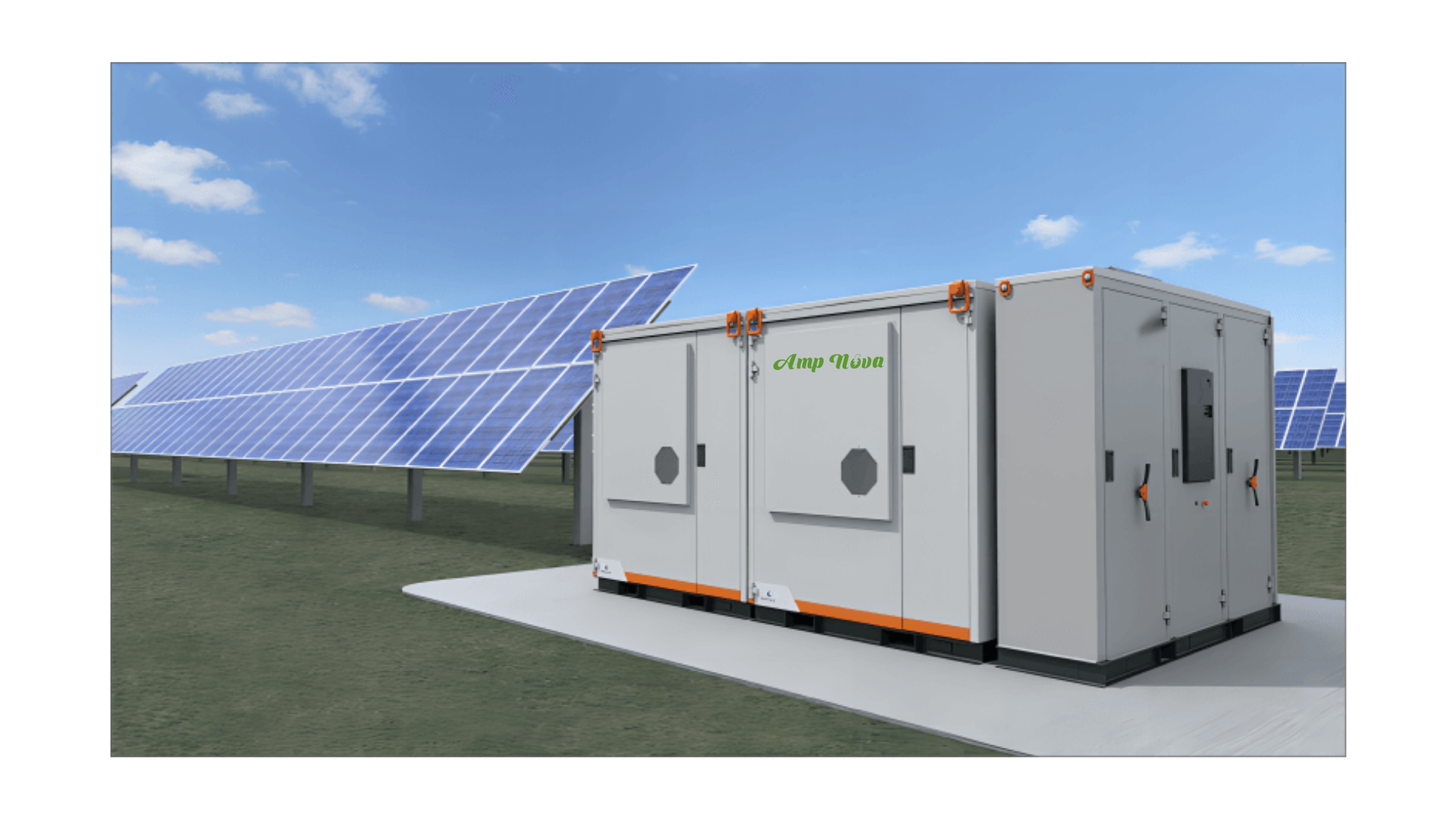- Introduction
- Benefits of Commercial Energy Storage Systems
- Integration with Renewable Energy Sources
- Enhancing Grid Stability
- Increasing Energy Efficiency
- Reducing Energy Costs
- Unlocking New Business Opportunities
- Conclusion
In an ever-evolving world driven by technological advancements and a growing demand for sustainable energy solutions, the importance of commercial energy storage systems has been steadily on the rise. These systems play a crucial role in the efficient and reliable management of electrical power, offering businesses an array of benefits such as cost savings, grid stability, and environmental sustainability. As industries increasingly shift towards renewable energy sources and seek to reduce their carbon footprint, the need for robust and scalable energy storage solutions becomes even more pressing.
The concept of energy storage is not new, but as the global energy landscape rapidly transforms, its significance has grown exponentially. With the integration of intermittent renewable energy sources like solar and wind power into the grid, commercial energy storage systems provide a vital bridge between generation and consumption, ensuring a reliable supply of electricity despite fluctuations in renewable energy production. By capturing excess energy during periods of high generation and releasing it during times of high demand or low generation, these systems enhance grid resilience and stability, reducing the risk of blackouts and power outages.
One of the key advantages of commercial energy storage systems lies in their ability to help businesses optimize their energy consumption patterns and reduce costs. With the integration of advanced energy management systems, companies can monitor and analyze their energy usage in real-time, identifying areas of inefficiency and implementing strategies to maximize energy efficiency. By storing excess energy when prices are low and discharging it during peak demand when prices are high, businesses can effectively manage their energy expenses and mitigate the impact of fluctuating energy prices.
Moreover, commercial energy storage systems serve as a buffer between renewable energy generation and the grid, making these intermittent sources more reliable and predictable. This is particularly crucial in regions with a high penetration of solar or wind power, where sudden changes in weather conditions can lead to significant fluctuations in energy production. By storing excess renewable energy, businesses can ensure a more consistent and reliable electricity supply, reducing the need for backup power sources and increasing grid stability.
The growing awareness and commitment towards environmental sustainability have also contributed to the rising importance of commercial energy storage systems. As businesses strive to reduce their carbon footprint and meet sustainability targets, energy storage solutions enable increased utilization of renewable energy sources. By storing excess renewable energy that would otherwise be wasted, businesses can further reduce their reliance on fossil fuels and minimize greenhouse gas emissions. This not only aligns with corporate social responsibility goals but also helps combat climate change and create a more sustainable future.
In addition to these primary benefits, commercial energy storage systems offer a range of secondary advantages. They provide backup power capabilities, ensuring a reliable electricity supply during grid outages or emergencies. This is particularly crucial for industries where downtime can result in significant financial losses, such as data centers or hospitals. Energy storage systems also enable the integration of electric vehicles (EVs) into the grid, facilitating the growth of clean transportation and reducing dependence on fossil fuels.
The growing importance of commercial energy storage systems has captured the attention of businesses, governments, and investors worldwide. As the technology continues to evolve, costs are expected to decrease, making energy storage solutions more accessible and economically viable. This not only opens up new opportunities for businesses to enhance their operational efficiency but also presents an attractive investment avenue for those seeking to participate in the transition towards a more sustainable energy system.
In conclusion, the growing importance of commercial energy storage systems is driven by the need for reliable and efficient energy management, cost savings, grid stability, and environmental sustainability. These systems act as a crucial bridge between intermittent renewable energy sources and the grid, offering businesses and industries a way to optimize their energy consumption and reduce their carbon footprint. As the world moves towards a clean energy future, the significance of commercial energy storage systems will continue to increase, paving the way for a more resilient, sustainable, and prosperous energy landscape.
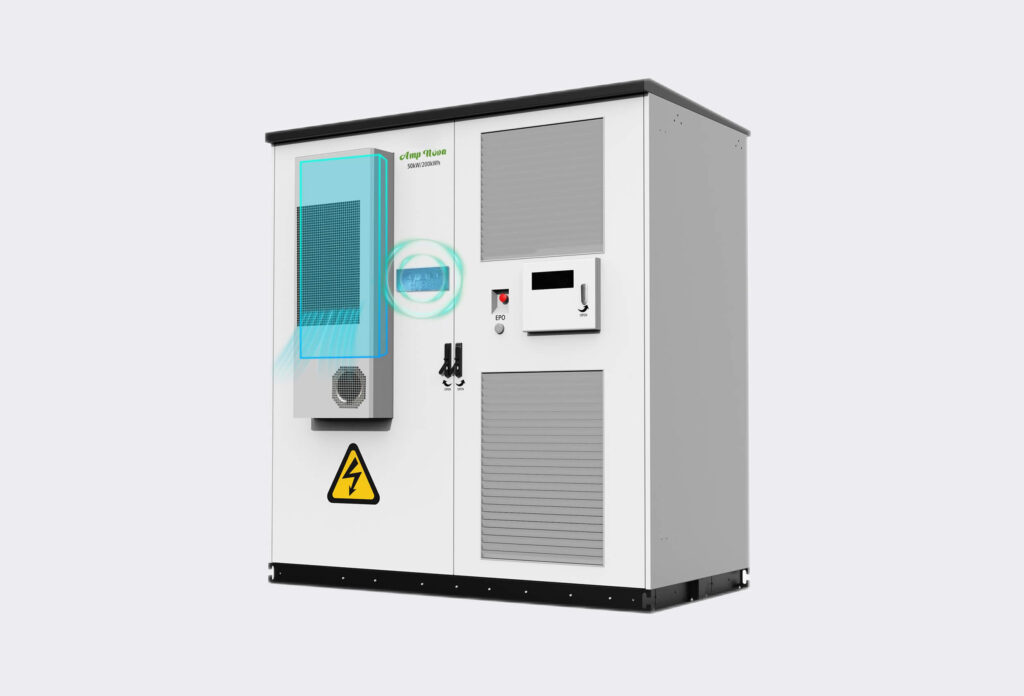
Contents
- 1 Introduction
- 2 Benefits of Commercial Energy Storage Systems
- 3 Integration with Renewable Energy Sources
- 4 Enhancing Grid Stability
- 5 Increasing Energy Efficiency
- 6 Reducing Energy Costs
- 7 Unlocking New Business Opportunities
- 8 Conclusion
- 9 FAQ
- 9.1 1. What are the different types of energy storage systems?
- 9.2 2. Which is the best energy storage system?
- 9.3 3. Who is the largest ESS manufacturer?
- 9.4 4. What is the most popular energy storage?
- 9.5 5. What are the three types of energy storage?
- 9.6 6. What are the latest technologies in energy storage?
Introduction
Commercial energy storage systems are playing an increasingly vital role in the modern energy landscape. With the growing demand for renewable energy sources, the integration and management of these intermittent sources have become a significant challenge. Energy storage technologies have emerged as a solution to address this challenge by enabling the efficient storage and utilization of excess renewable energy.
The need for commercial energy storage systems has arisen due to several factors. One of the primary reasons is the increasing penetration of renewable energy sources such as solar and wind power in the grid. Unlike traditional power plants, renewable sources are intermittent and highly dependent on environmental conditions. This variability in power generation poses challenges to grid stability and necessitates the deployment of energy storage systems to balance supply and demand.
Furthermore, commercial energy storage systems play a critical role in enhancing grid resiliency and reliability. They provide backup power during blackouts or grid failures, ensuring uninterrupted energy supply to businesses and critical infrastructures. By alleviating pressure on the grid during periods of high demand, energy storage systems also mitigate the risk of power outages and reduce the need for costly grid infrastructure upgrades.
Another significant driver for the adoption of commercial energy storage is the potential for cost savings. Energy storage systems facilitate the optimization of energy consumption patterns by storing excess energy during low-demand periods and discharging it during peak-demand periods. This helps businesses reduce their energy bills by avoiding high-cost electricity during peak hours.
The increasing affordability and scalability of energy storage technologies have also contributed to their growing importance in commercial settings. Advancements in battery technologies, such as lithium-ion batteries, have made storage systems more efficient, robust, and cost-effective. Moreover, the modular design of energy storage systems allows for easy scalability to accommodate varying energy needs, making them suitable for businesses of all sizes.
In conclusion, commercial energy storage systems are becoming increasingly crucial in today’s energy landscape. They provide solutions for integrating renewable energy sources, enhancing grid resiliency, reducing costs, and enabling a more sustainable and reliable energy future. As the demand for clean energy continues to rise, the role of commercial energy storage systems will only become more significant in ensuring a stable and efficient power supply.
Benefits of Commercial Energy Storage Systems
Commercial energy storage systems offer numerous benefits for businesses and organizations. These systems play a crucial role in enhancing energy efficiency, reducing costs, ensuring grid reliability, and promoting renewable energy integration. Let’s explore some of the significant benefits commercial energy storage systems can provide:
1. Energy Cost Savings
One of the primary advantages of commercial energy storage systems is their ability to minimize energy costs. These systems allow businesses to store excess electricity when it is available at a lower cost and use it during peak-demand periods when electricity prices are higher. By shifting energy consumption to off-peak hours, companies can take advantage of lower energy rates and significantly reduce their utility bills. This cost-saving potential can have a significant impact on a business’s overall profitability.

2. Demand Charge Management
Demand charges account for a substantial portion of commercial electricity bills. These charges are based on the highest amount of power a business requires within a specified time period. By using energy storage systems effectively, businesses can reduce peak demand and, in turn, lower their demand charges. This not only leads to substantial cost savings but also enables businesses to better manage their energy usage and optimize their overall power consumption.
3. Grid Reliability and Resilience
Commercial energy storage systems provide a reliable and resilient power supply for businesses. These systems can help mitigate power outages by providing backup electricity during emergencies or grid failures. By storing electricity, businesses can ensure uninterrupted operations, protect critical equipment, and avoid costly business disruptions. Moreover, energy storage systems can enhance grid stability by providing ancillary services such as voltage support and frequency regulation. This contributes to a more reliable and resilient electrical grid.
4. Integration of Renewable Energy Sources
Renewable energy sources such as solar and wind power are intermittent in nature, often generating electricity when it may not be immediately required. Commercial energy storage systems can effectively bridge this gap by storing excess energy and releasing it when the demand is high. This integration of renewable energy sources with energy storage allows businesses to maximize their renewable energy utilization, reduce reliance on non-renewable sources, and contribute to overall sustainability efforts.
5. Environmental Benefits
By promoting energy efficiency and renewable energy integration, commercial energy storage systems have a positive environmental impact. These systems help reduce greenhouse gas emissions by lowering the reliance on fossil fuel-based power generation. By leveraging clean and renewable energy sources, businesses can effectively contribute to carbon footprint reduction and mitigate the effects of climate change. Implementing energy storage systems aligns with corporate social responsibility goals and demonstrates a commitment to sustainable practices.
6. Financial Incentives and Revenue Opportunities
The adoption of commercial energy storage systems can be further incentivized through various financial programs and revenue opportunities. Many governments and utilities offer incentives, grants, and tax credits to businesses that invest in energy storage technologies. Additionally, energy storage can open new revenue streams through participation in demand response programs, grid services markets, or energy arbitrage opportunities. Capturing these financial incentives and revenue streams can enhance the economic viability of deploying energy storage systems for businesses.
In conclusion, the benefits of commercial energy storage systems are multifaceted. From cost savings and demand charge management to grid reliability, renewable energy integration, environmental benefits, and financial incentives, these systems provide businesses with a range of advantages. As the importance of energy storage continues to grow, more businesses are recognizing the potential benefits and actively investing in these systems to optimize their energy usage and contribute to a sustainable future.
Integration with Renewable Energy Sources
As the demand for clean and sustainable energy continues to grow, the integration of commercial energy storage systems with renewable energy sources has become increasingly important. Renewable energy sources such as solar and wind power have inherent intermittency and variability, which can result in imbalances between energy generation and demand. Energy storage systems play a crucial role in mitigating these challenges by storing surplus energy generated during times of high production and releasing it during periods of high demand.
One of the key benefits of integrating commercial energy storage systems with renewable energy sources is the ability to increase the overall reliability and stability of the renewable energy grid. By storing excess energy generated by solar panels or wind turbines, storage systems can provide a consistent and reliable power supply, even during periods of low or no renewable energy generation. This ensures a stable and uninterrupted electricity supply for users and helps to overcome the limitations of intermittent renewable energy sources.
Moreover, commercial energy storage systems enhance the integration of renewable energy sources into the existing grid infrastructure. By storing excess energy during periods of low demand, these systems enable the smooth integration of renewable energy into the grid, as they can release the stored energy during times of high demand, ensuring a steady and reliable power supply for consumers.
The integration of energy storage with renewable energy sources also promotes the efficient use of renewable resources. During periods of high renewable energy generation, when the demand may be low, the excess energy can be stored rather than curtailed. This allows for the maximization of renewable energy utilization, minimizing wastage and improving the overall efficiency of the renewable energy system.
Furthermore, the integration of commercial energy storage systems with renewables has the potential to enhance grid flexibility and stability. By providing fast response times and the ability to inject power into the grid rapidly, energy storage systems can help to stabilize the grid and manage fluctuations in supply and demand. This is particularly crucial for renewable energy sources that are subject to abrupt changes in weather conditions or variations in energy generation.
In conclusion, the integration of commercial energy storage systems with renewable energy sources holds immense importance in the transition towards a cleaner and more sustainable energy future. By providing reliability, stability, and grid flexibility, energy storage systems offer a solution to the intermittent nature of renewable energy sources, ensuring a constant and uninterrupted power supply. With ongoing advancements in technology and decreasing costs, the integration of energy storage with renewables is set to play a central role in the energy landscape, paving the way towards a greener and more sustainable future.
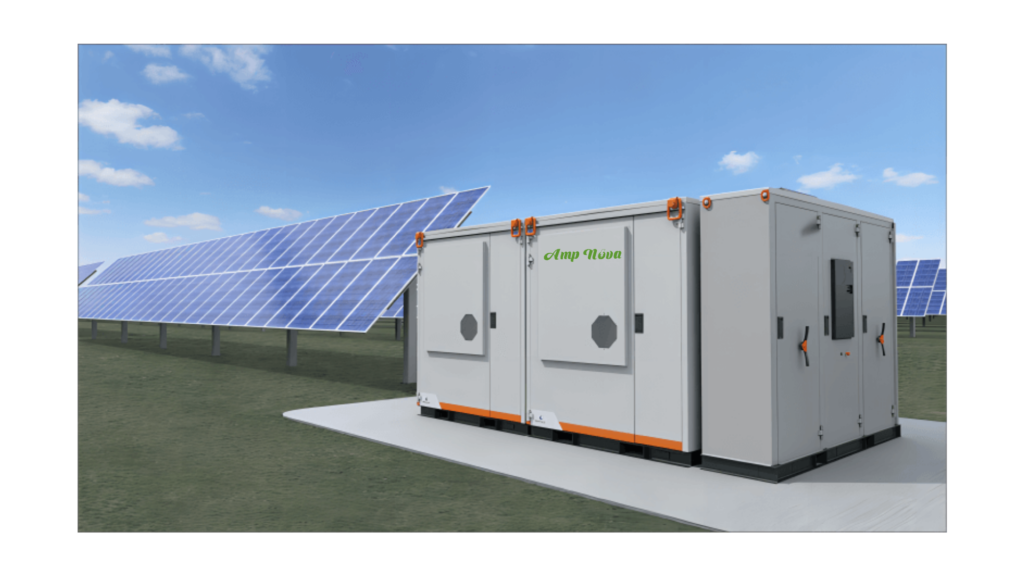
Enhancing Grid Stability
Energy storage systems play a crucial role in enhancing the stability of the power grid. They provide a reliable source of power that can quickly respond to fluctuations in demand and supply, helping to balance the grid and ensure a consistent and reliable electricity supply.
One way in which commercial energy storage systems contribute to grid stability is by smoothing out the variability of renewable energy sources. Renewable energy, such as solar and wind, is inherently intermittent, as it depends on weather conditions. This can introduce challenges in matching supply with demand, particularly during periods of high renewable energy generation or low demand.
Energy storage systems can address this issue by storing excess energy produced during times of high generation and releasing it when demand is high, effectively leveling out the supply and demand curve. By doing so, they help ensure a more stable, reliable, and resilient grid.
Furthermore, energy storage systems can provide ancillary services to the grid, such as frequency regulation and voltage control. These services are critical for maintaining the stability of the grid, as they help to manage any deviations from the desired frequency and voltage levels. By rapidly injecting or absorbing power, energy storage systems can help balance the grid, preventing disruptions and ensuring smooth operations.
In addition to improving grid stability, energy storage systems can also enhance the efficiency of the grid. By storing excess energy during off-peak hours and releasing it during peak demand periods, energy storage systems help avoid the need for additional power generation capacity. This reduces the overall strain on the grid, increases efficiency, and minimizes the reliance on costly peak power plants.
Moreover, the deployment of energy storage systems at key points in the transmission and distribution network can help alleviate congestion, optimize power flows, and improve voltage stability. By strategically placing energy storage systems, grid operators can actively manage and control the flow of power, ensuring that it reaches its destination efficiently while maintaining the stability of the grid.
As the integration of renewable energy sources continues to grow, the importance of energy storage systems in enhancing grid stability becomes even more significant. These systems enable a more flexible, secure, and reliable power grid that can effectively accommodate a higher penetration of renewable energy. In addition, they contribute to the overall decarbonization goals by reducing the reliance on fossil fuel-based backup power generation.
Therefore, investments in commercial energy storage systems are essential for ensuring an optimized and stable grid. The advanced technologies associated with these systems, such as lithium-ion batteries and power management software, are continuously evolving and becoming more cost-effective. This creates an opportune environment for further deployment and integration of energy storage systems into the grid infrastructure, providing the necessary stability for a sustainable energy future.
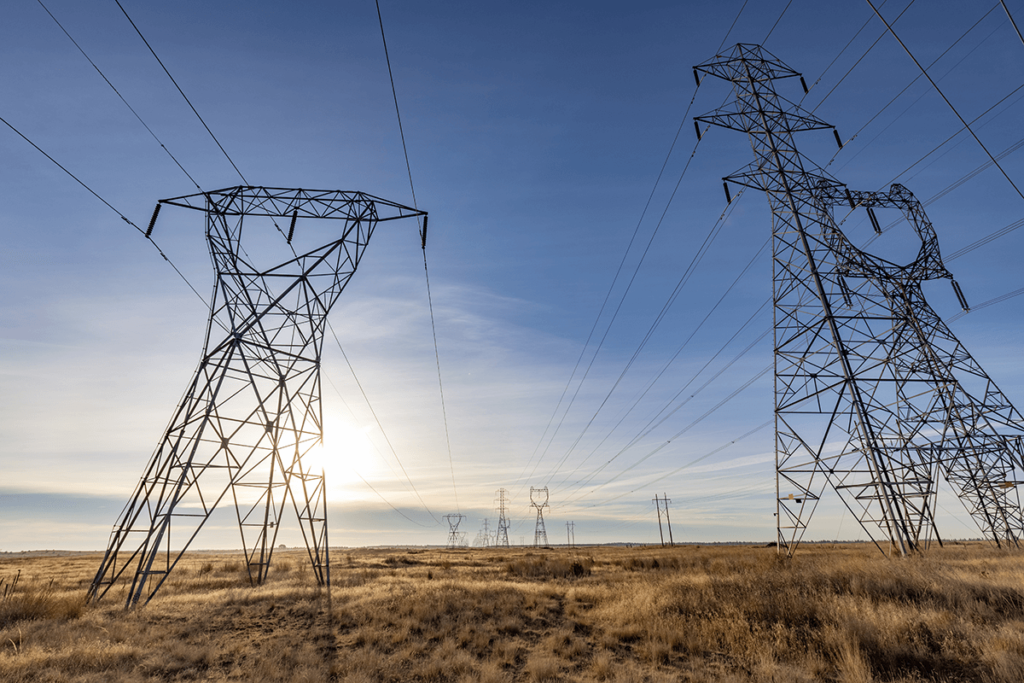
Increasing Energy Efficiency
One of the key benefits of commercial energy storage systems is their ability to increase energy efficiency. By storing excess energy during times of low demand and then releasing it during times of high demand, these systems can help businesses optimize their energy usage.
One way that commercial energy storage systems contribute to increased energy efficiency is through load shifting. Load shifting involves redistributing energy usage from peak demand periods to off-peak periods when energy is less expensive. By storing energy during off-peak times and utilizing it during peak demand periods, businesses can reduce their reliance on the grid during times when electricity rates are highest. This not only helps businesses save on energy costs but also helps to reduce strain on the grid, leading to a more reliable energy supply for all users.
Additionally, commercial energy storage systems can help businesses avoid costly peak demand charges. Many utilities impose additional charges on businesses that use energy during peak demand periods. These charges can significantly increase a business’s energy costs. However, by using energy stored in a commercial energy storage system during peak demand periods, businesses can avoid or reduce these peak demand charges, resulting in substantial savings.
Furthermore, commercial energy storage systems can enhance the effectiveness of renewable energy sources. Renewable energy, such as solar and wind, is inherently intermittent, meaning it is generated only when the sun shines or the wind blows. By combining renewable energy generation with energy storage, businesses can overcome the variability of renewable energy sources. Excess renewable energy generated can be stored in the energy storage system for use during times when renewable energy generation is insufficient. This not only helps to maximize the utilization of renewable energy but also reduces the need for fossil fuel-based backup power sources.
In addition to these direct energy efficiency benefits, commercial energy storage systems can also contribute to the overall efficiency of a business’s energy management. These systems can be integrated with advanced energy management systems, allowing businesses to monitor and optimize their energy usage in real time. By analyzing energy consumption patterns and utilizing the stored energy intelligently, businesses can identify areas of energy waste and implement strategies to further reduce their energy consumption and costs.
In summary, commercial energy storage systems offer a range of benefits to businesses, including increased energy efficiency. By enabling load shifting, reducing peak demand charges, maximizing the utilization of renewable energy, and optimizing overall energy management, these systems help businesses not only save on energy costs but also contribute to a more sustainable and reliable energy
future.
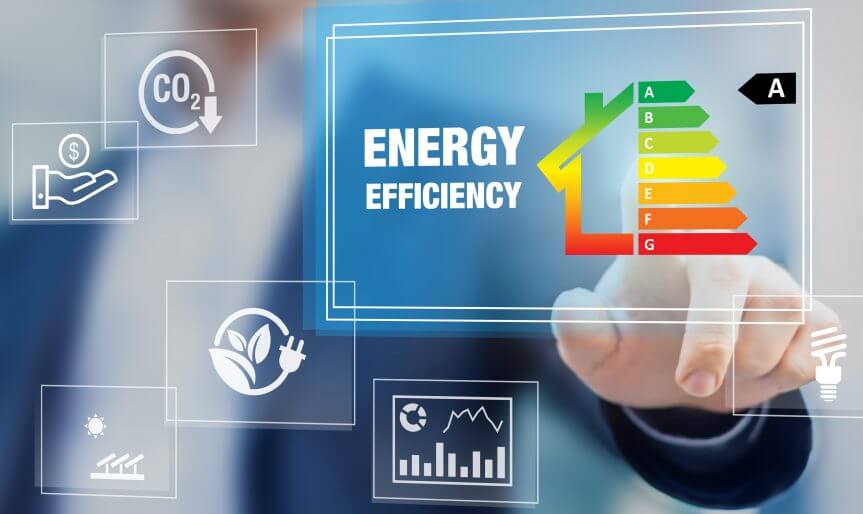
Reducing Energy Costs
Commercial energy storage systems play a vital role in reducing energy costs for businesses. These systems offer a range of benefits that help organizations optimize their energy usage and lower their utility bills. By strategically storing excess energy during times of low demand and releasing it during peak hours, businesses can take advantage of lower electricity rates and avoid costly demand charges.
One of the primary ways that commercial energy storage systems reduce energy costs is by enabling businesses to participate in utility demand response programs. These programs incentivize businesses to reduce their energy consumption during periods of high demand by offering them financial rewards. By utilizing energy storage systems to store energy during off-peak hours, businesses can lower their electricity usage during peak times, helping to alleviate strain on the grid and earn money through demand response programs.
Another key benefit of commercial energy storage systems is their ability to smooth out fluctuations in energy supply and demand. By storing excess energy when it is abundant and releasing it back into the grid during times of high demand, businesses can avoid purchasing electricity at expensive peak rates. This not only helps to reduce energy costs but also enhances grid stability and reliability by balancing supply and demand.
Moreover, commercial energy storage systems can also help businesses take advantage of time-of-use (TOU) pricing structures. TOU pricing charges customers different rates for electricity depending on the time of day. By storing energy during low-price periods and using it during high-price periods, businesses can significantly reduce their energy bills. This allows organizations to align their energy consumption with the pricing structure, maximizing savings and optimizing cost management.
In addition to reducing energy costs, commercial energy storage systems also offer long-term financial benefits. By decreasing demand charges and participating in demand response programs, businesses can generate additional revenue streams and improve their bottom line. Furthermore, as energy costs continue to rise, having an energy storage system can provide businesses with greater energy independence and mitigate the impact of unpredictable utility rate increases.
Overall, commercial energy storage systems have emerged as an essential tool for businesses looking to reduce energy costs. By taking advantage of demand response programs, smoothing out energy fluctuations, and optimizing time-of-use pricing, organizations can substantially lower their utility bills and enhance their financial sustainability. Moreover, with the long-term financial benefits and energy independence these systems offer, investing in commercial energy storage has become a vital strategy for businesses seeking to remain competitive in an increasingly energy-intensive landscape.
Unlocking New Business Opportunities
The adoption of commercial energy storage systems is not only beneficial for the environment but also presents numerous new business opportunities for various industries. As energy storage technologies continue to evolve and become more affordable, industries are realizing the potential to optimize their operations and diversify their revenue streams. This section explores some of the key business opportunities that arise from the implementation of commercial energy storage systems.

1. Energy Cost Management
One of the primary advantages of commercial energy storage systems is the ability to manage energy costs more effectively. Businesses can store excess electricity during periods of low demand or low energy prices and use it during peak hours or when prices are high. By doing so, businesses can reduce their reliance on grid electricity and avoid expensive peak demand charges. With energy storage, companies gain greater control over their energy usage, enabling them to minimize costs and maximize savings.
2. Demand Response Participation
Commercial energy storage systems enable businesses to participate in demand response programs. These programs incentivize companies to reduce their electricity consumption during periods of high demand or supply constraints. By storing energy and utilizing it when electricity demand is at its peak, businesses can contribute to grid stability and earn financial rewards or credits. This participation not only generates additional revenue streams for businesses but also helps ensure the reliability and stability of the overall electricity grid.
3. Renewable Energy Integration
The integration of renewable energy sources, such as solar and wind, into the grid faces challenges due to their intermittent nature. Commercial energy storage systems can help overcome these challenges by storing excess renewable energy during times of high generation and making it available when demand exceeds supply. This ability to mitigate the intermittency issues of renewables opens up opportunities for businesses to increase their reliance on clean energy sources while minimizing their dependence on fossil fuels. It also allows businesses to participate in renewable energy markets, providing an additional revenue stream.
4. Microgrid Development
Commercial energy storage systems play a crucial role in the development of microgrids, which are localized power grids that can operate independently or in conjunction with the main utility grid. By integrating energy storage, businesses can create resilient and self-sufficient microgrids, reducing their vulnerability to power outages and increasing their energy reliability. Moreover, microgrids can offer a range of benefits, including energy resiliency, cost savings, and the opportunity to sell excess electricity back to the main grid or neighboring facilities.
5. Electric Vehicle Charging Infrastructure
As electric vehicles (EVs) gain popularity, the demand for reliable and efficient charging infrastructure continues to grow. Commercial energy storage systems can support the establishment of EV charging stations by leveling the demand on the grid and providing a stable source of electricity. This synergy between energy storage and EV charging infrastructure unlocks new business opportunities, allowing businesses to offer charging services, attract EV users, and potentially generate revenue through charging fees or partnerships with EV manufacturers.
6. Energy Services and Grid Support
Commercial energy storage systems have the potential to provide valuable energy services and support the grid’s stability and reliability. By participating in frequency regulation, voltage control, and grid balancing services, businesses can contribute to a more efficient electricity system and earn additional revenue in the process. Additionally, these services can help accelerate the integration of renewable energy into the grid, ensuring a smooth transition to a more sustainable energy future.
In conclusion, commercial energy storage systems open the door to various new business opportunities across industries. From energy cost management and demand response participation to renewable energy integration and microgrid development, businesses are finding innovative ways to leverage energy storage technologies to their advantage. The growing importance of commercial energy storage systems signals a shift towards a more sustainable and resilient energy landscape, where businesses can unlock economic and environmental benefits simultaneously.
Conclusion
In conclusion, commercial energy storage systems are playing an increasingly important role in the energy landscape. These systems offer numerous benefits, including enhanced grid stability, improved energy efficiency, and increased utilization of renewable energy sources. As the world continues to shift towards a more sustainable and clean energy future, the demand for commercial energy storage systems is expected to grow exponentially.
One of the key drivers for the adoption of commercial energy storage systems is the growing need to manage intermittent renewable energy sources. By storing excess energy during times of high generation and releasing it during periods of low generation, energy storage systems help to balance the supply and demand of electricity. This not only ensures a more reliable supply of energy but also maximizes the utilization of renewable resources such as solar and wind power.
Furthermore, commercial energy storage systems provide crucial support for grid stability. By offering services such as frequency regulation and voltage control, these systems can help maintain a steady flow of electricity, mitigating fluctuations and minimizing the risk of blackouts. This is particularly important as the penetration of renewable energy sources grows, as they are inherently more variable compared to conventional energy sources.
Another significant advantage of commercial energy storage systems is their potential to reduce energy costs for businesses. By storing energy when electricity prices are low and discharging it during peak demand periods when prices are high, these systems can help commercial establishments save on their energy bills. Additionally, energy storage systems can also provide backup power during outages, ensuring uninterrupted operations for crucial facilities such as data centers and hospitals.
The increasing affordability and technological advancements in battery storage technologies have significantly contributed to the widespread deployment of commercial energy storage systems. With falling costs and improving performance, these systems have become more accessible to a wide range of businesses and industries.
In the years to come, the growth of commercial energy storage systems is expected to be driven by factors such as government incentives and regulations, increasing environmental awareness, and the need for a more resilient and sustainable energy infrastructure. The deployment of these systems will continue to accelerate the transition towards a cleaner and more reliable energy future.
Overall, commercial energy storage systems have emerged as a vital solution for addressing the challenges associated with renewable energy integration, grid stability, and energy management. As businesses and industries recognize the value and benefits of energy storage, the demand for these systems will only continue to grow, leading to a more sustainable and resilient energy sector.
FAQ
1. What are the different types of energy storage systems?
There are several types of energy storage systems, each with its unique advantages and applications:
- Electrochemical Storage: This includes lithium-ion, lead-acid, nickel-cadmium, and flow batteries. They store energy in the form of chemical energy and convert it back to electrical energy when needed.
- Mechanical Storage: Examples are pumped hydro storage, compressed air energy storage (CAES), and flywheels. They store energy by using mechanical systems.
- Thermal Storage: This involves storing energy in the form of heat or cold, such as molten salt storage or ice storage.
- Electromagnetic Storage: Superconducting magnetic energy storage (SMES) and capacitors fall under this category. They store energy in the electromagnetic field.
- Chemical Storage: Hydrogen and synthetic gas are examples where energy is stored in chemical bonds and released through chemical reactions.
2. Which is the best energy storage system?
The “best” energy storage system depends on the specific application and requirements. For instance, lithium-ion batteries are popular for their high energy density and long cycle life, making them suitable for many commercial applications. However, for large-scale grid storage, pumped hydro might be more appropriate due to its vast capacity and longer discharge times.
3. Who is the largest ESS manufacturer?
As of my last update in January 2022, companies like Tesla, LG Chem, and CATL are among the leading manufacturers in the energy storage sector. However, the industry is rapidly evolving, and rankings can change based on market dynamics and technological advancements.
4. What is the most popular energy storage?
Lithium-ion batteries have gained immense popularity in recent years due to their efficiency, declining costs, and versatility. They’re widely used in everything from electric vehicles to commercial energy storage solutions.
5. What are the three types of energy storage?
While there are more than three types, if we were to categorize broadly, we could say:
- Electrochemical Storage: Batteries that store energy chemically.
- Mechanical Storage: Systems that store energy using mechanical means, like pumped hydro.
- Thermal Storage: Systems that store energy in the form of heat or cold.
6. What are the latest technologies in energy storage?
Innovation in energy storage is continuous. Some of the emerging technologies include:
- Solid-State Batteries: These promise higher energy densities and safety compared to traditional lithium-ion batteries.
- Gravity-Based Storage: Using weights and gravitational forces to store and release energy.
- Advanced Flow Batteries: Offering potential for longer durations and more cycles compared to traditional batteries.
- Green Hydrogen: Storing energy in the form of hydrogen produced using renewable energy sources.
Reach out NOW for a personalized consultation and unlock unparalleled energy solutions tailored just for you!
